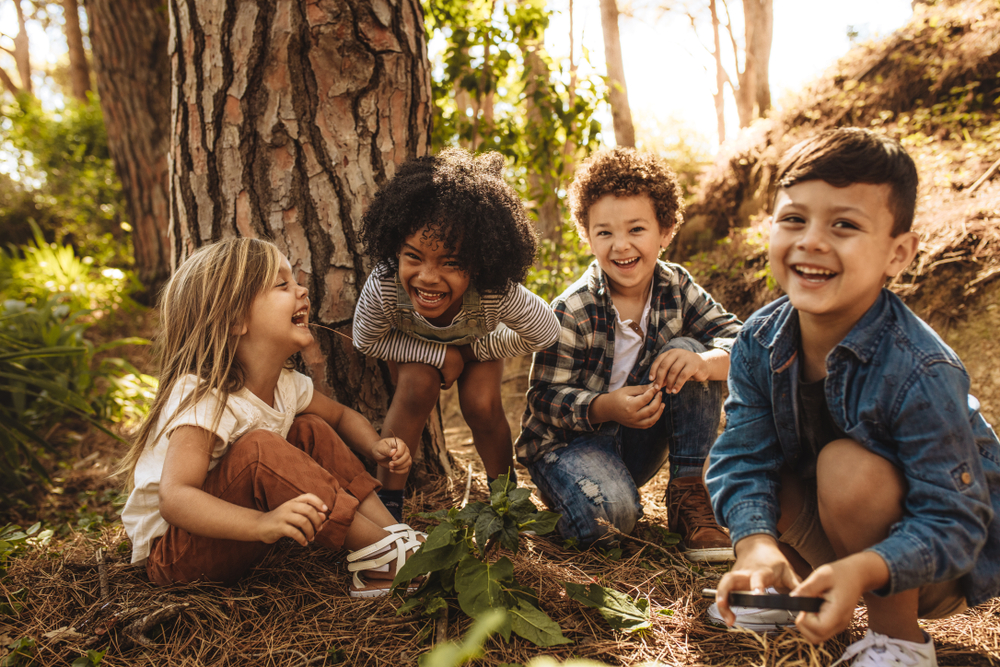Our Winter 2021/22 issue has gone to print. In this issue, we look at ways of cultivating respect in children – dive on in for a sneak peek!
Cultivating Respect
Parenting For Unity Among All People
by Patty Wipfler
Children are not, by nature, racist. Nor are they born with damaging assumptions about people in any definable group. Racism is learnt behaviour, stemming from fear and a feeling of being separate. Children don’t relate to the concept of racial identity until they are eight to ten years old. We all begin with a winning trust in others, an expectation that people will be good to each other, and that life with others will be safe and fun. When a child feels close to his parents, gets to play freely with lots of laughter, gets plenty of affection, and has sensible limits set by grown-ups who don’t attack him, a young person can feel at home with himself, and relaxed with others.
Contrary to popular belief, children have a keen inborn sense of justice. They are built to protest loudly when they or someone else is being treated badly. This sense of justice runs deep. You probably can remember times in your childhood when you or someone you cared about was attacked, verbally or physically. You didn’t have to be told that this treatment was wrong and should be stopped immediately. You just knew it in your gut. We don’t have to teach children respect for people of other races and abilities. We simply need to preserve their trust in themselves and others, and their inborn sense of justice.
If a child feels safe and strong, he will respond with indignation to racism, whether it’s directed at him or at someone else. He will know that the racist attitude he has witnessed is wrong, and won’t adopt it as his own. Children are able to retain their keen sense of justice if they are treated with respect. Respectful treatment that inoculates a child against racism means several very specific things:
• A child is appreciated for who they are, regardless of what they can or can’t do.
• A child is not typecast. Generalisations like “shy,” “loud,” “bossy,” are not used, and put-downs like “bratty,” “whiny,” and “stupid” are also off-limits.
• A child’s curiosity is supported. When questions are asked about why people look or act the way they do, those questions are warmly answered at a level the child can understand. In other words, it’s okay to be interested in all aspects of being human.
• The child is not compared to others, and judgments like “bad,” “good,” “better,” and “best” aren’t used to classify them or other people. This means, for instance, that when asked why some people are sent to jail, a parent would explain that those people have done something seriously hurtful to someone else, not that those are bad people.
• The child is not intimidated for having upsets about the things that matter to them. In particular, the child is allowed to express feelings with crying, tantrums, and “freedom of the mouth” while crying or tantruming. You, as parent, will often set limits that upset your child. That’s your job, and it’s an important one. However, your child’s job is then to blast away the bad feelings that those limits bring forth, so they can recover their sense that you care and that life is a good. When a child cries, has a tantrum, or storms in response to a limit, he is using an inborn healing process. Your child needs your attention while they get rid of awful feelings.
• The child is not hit, slapped, threatened with physical attack, shamed, or blamed. These kinds of attacks by adults leave big emotional scars on children, and impress them with the notion that some people deserve to be called “bad” and then mistreated. In short, what makes children vulnerable to racism is to treat children like we are better than they are, we know better than they do, we are more important than they are, and our feelings have more validity than their feelings. Instead, we need to guide them with respect for their intelligence, whether they are acting intelligently at the moment or not.
The most powerful model we can provide is to reach out and get to know people who are different from us. White people can encourage each other and be listeners for each other in these efforts. People of colour can support each other, too, and listen to the pain and the memories of bad experiences that will inevitably arise as steps toward friendship are bravely taken. Friendship—relaxed, unguarded human contact—is at the heart of undoing racism and every other “ism.”
Guest article by Patty Wipfler, Founder of Hand in Hand Parenting (this is a shorter version of Patty’s writing on parenting against racism). You can read her longer articles on this topic and many more great parenting ideas at: handinhandparenting.org


